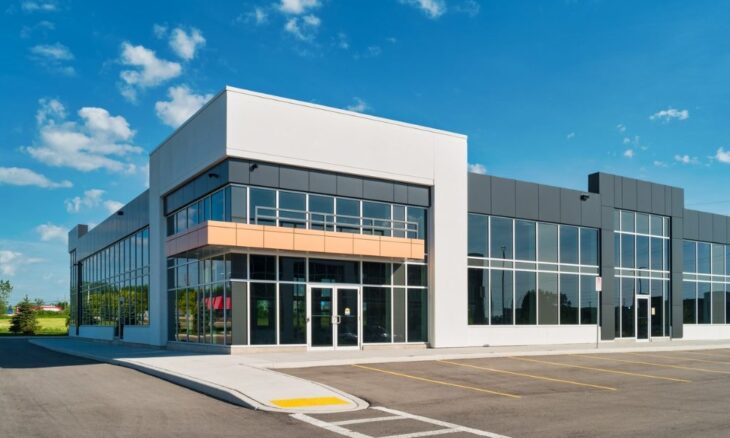
Last Updated on February 12, 2025 by Surender Kumar
Office building maintenance is a crucial aspect of ensuring a safe, productive, and comfortable work environment for employees and visitors. Neglecting maintenance can lead to higher operational costs, decreased property value, and potential safety hazards.
To help you master the art of office building maintenance, we’ll explore the best practices and tips that should be part of your strategy.
Table of Contents
1. Regular Inspections are Your First Line of Defense
Regular inspections serve as your first line of defense against building maintenance issues. Create a comprehensive checklist that covers all aspects of your office building, from the roof to the basement.
It should include critical components like electrical systems, plumbing, HVAC, lighting, and security measures. Set up a schedule for these inspections to ensure nothing is overlooked. Early detection of maintenance issues can save you time and money in the long run.
2. Prioritize Preventive Maintenance
Preventive maintenance is an essential aspect of maintaining any building, including office buildings. It involves taking a proactive approach by regularly servicing and replacing critical components before they fail. HVAC systems, for instance, should undergo routine maintenance to ensure they function efficiently.
This includes air conditioning repair in Draper, Utah, and other necessary repairs to keep the system running smoothly.
Additionally, electrical and plumbing systems should also receive routine maintenance to minimize the risk of unexpected breakdowns and prolong the lifespan of the overall infrastructure.
3. Clean & Maintain Elevators
Elevators must work smoothly for safety and efficiency. Clean buttons, doors, and floors regularly. Inspect cables, motors, and emergency brakes.
Lubricate moving parts to prevent breakdowns. Check for unusual noises or slow operation. A well-maintained elevator ensures safe rides and prevents costly repairs or unexpected downtime.
4. Check & Replace Worn-Out Carpets
Carpets trap dust, allergens, and bacteria over time. Vacuum daily and deep clean regularly to extend lifespan. Inspect for fraying, stains, or odors.
Replace old or damaged carpets to maintain a professional look. Fresh carpets enhance air quality and create a cleaner, more inviting workspace for everyone.
5. Maintain a Clean and Hygienic Environment
A clean and hygienic office environment is not only essential for the well-being of occupants but also reflects positively on your organization. Our services for regular cleaning should be scheduled, with a focus on high-traffic areas, restrooms, and shared spaces in order to maintain hygiene regulations.
Adequate waste management practices are also crucial in maintaining cleanliness and preventing odors or pest infestations. Now, if an infestation were to occur especially in regions prone to dangerous wildlife, then it may be critical to reach out to services like Responsible Pest & Scorpion Control, for example, as they can address risks from venomous creatures in office environments, both indoors and outdoors.
Similar comprehensive approaches are essential for managing other workplace hazards, such as fire ant colonies in outdoor work areas or venomous spider populations that can compromise employee safety and organizational reputation. This is crucial in maintaining hygiene. Last but not the least, educate tenants and staff about responsible waste disposal and recycling.
6. Keep Office Spaces Well-Lit
Good lighting boosts focus and reduces eye strain. Replace flickering or dim bulbs quickly. Use natural light where possible to improve mood and energy.
Install LED lights for better brightness and energy savings. Well-lit offices create a more comfortable and productive work environment for employees.
7. Enhance Energy Efficiency
Improving energy efficiency is not only a responsible environmental choice but also a cost-effective measure. Upgrade lighting to energy-efficient LED bulbs and implement programmable thermostats.
Seal any energy leaks in windows, doors, and ductwork to maintain consistent indoor temperatures and improve energy efficiency. Proper insulation prevents heat loss in winter and cool air escape in summer, ensuring optimal HVAC performance.
These actions can significantly reduce energy consumption, lower utility costs, and contribute to a greener, more sustainable environment.
8. Don’t Neglect the Exterior
The exterior of your office building is the first thing clients, employees, and visitors notice, making it a critical component of your business’s image.
A well-maintained landscape with clean pathways, trimmed greenery, and appealing design reflects professionalism and attention to detail. Proper landscaping and exterior maintenance not only enhance curb appeal but also create a welcoming atmosphere that leaves a lasting positive impression.
Regularly maintain the landscaping, parking areas, and walkways. Ensure that the building’s exterior is free of debris, graffiti, and other eyesores. For high-rise buildings or areas that are difficult to access, consider enlisting the services of rope access Melbourne, or a local company specializing in exterior maintenance. A well-kept exterior not only attracts tenants and clients but also helps maintain property value.
9. Regularly Clean & Polish Floors
Floors collect dirt, dust, and spills daily. Sweep and mop frequently to avoid stains and slippery surfaces. Use the right polish to keep floors shiny and long-lasting.
Repair cracks or loose tiles quickly. Well-maintained floors improve office appearance and reduce slip-and-fall risks for employees and visitors.
10. Emergency Preparedness is Paramount
Emergency preparedness is non-negotiable when it comes to office building maintenance. Develop and regularly update emergency response plans to keep everyone safe. It’s also a good idea to work with Fire Protection Specialists who can help ensure that fire alarms, sprinkler systems, and other safety equipment are fully operational and up to code.
In addition, conduct regular drills to familiarize occupants with emergency procedures and check that first aid kits and emergency exits are accessible. Being prepared can save lives and prevent property damage in critical situations.
11. Inspect & Maintain Office Furniture
Broken chairs and desks reduce comfort and productivity. Check for loose screws, worn-out cushions, or unstable frames. Clean surfaces to prevent dust buildup.
Repair or replace damaged furniture to maintain a professional setting. Ergonomic furniture keeps employees comfortable, reduces strain, and improves work efficiency.
12. Waste Management Matters
Proper waste management is an integral part of office building maintenance. Implement a robust waste management program that includes recycling and responsible disposal. Educate tenants and staff about the importance of waste reduction and recycling.
Not only does this contribute to a cleaner and more sustainable environment, but it can also help reduce waste management costs.
13. Train Staff on Maintenance Best Practices
A well-informed team helps keep the office in top shape. Teach employees to report leaks, flickering lights, or HVAC issues. Encourage keeping workspaces clean.
Provide basic training on fire safety, first aid, and emergency procedures. When everyone takes responsibility, office maintenance becomes easier and more effective.
14. Security Systems Must Be Reliable
Security is paramount in any office building. Ensure that your security systems, including access control, surveillance cameras, and alarm systems, are functioning correctly. Regularly test and maintain these systems to prevent vulnerabilities and security breaches. The safety and well-being of your tenants and property depend on it.
15. Documentation and Record-Keeping
Maintain detailed records of all maintenance activities, inspections, and repairs to ensure smooth operations and accountability. Comprehensive documentation provides a clear maintenance history, enabling you to track recurring issues, schedule preventive maintenance, and make informed decisions about equipment or infrastructure upgrades.
Proper records are also vital for regulatory compliance, simplifying audits, and demonstrating due diligence. Additionally, organized documentation streamlines communication among team members and external stakeholders, ensuring all maintenance efforts are well-documented and easily accessible when needed.
Conclusion
Mastering office building maintenance is a continuous process that involves a combination of best practices and diligent attention to detail. Regular inspections, preventive maintenance, cleanliness, energy efficiency, and emergency preparedness are just a few of the key practices that can help you maintain a safe, efficient, and pleasant office environment.
By implementing these tips, you can ensure that your office building remains a well-maintained, productive, and attractive place for all its occupants.

I am a passionate blogger having 10 years of experience in blogging and digital marketing. I started List Absolute in 2018 to give my passion a live platform. I have also a good hand in writing unique and quality content. Here I contribute in my free time. Thanks for reading. Let me know if I can help you get your work done in a timely manner.
